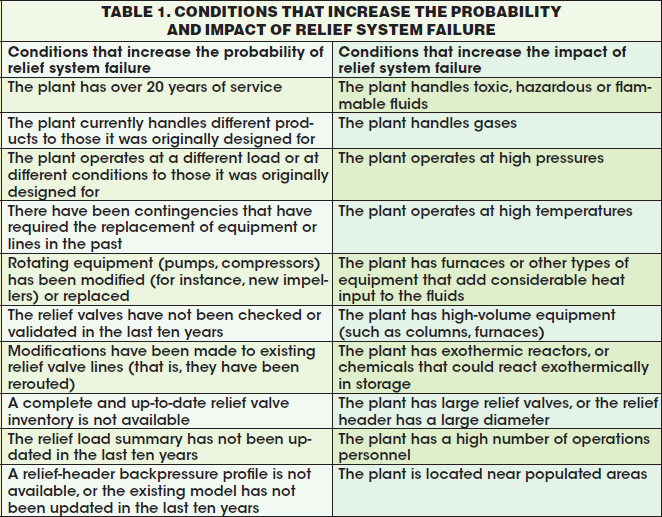Factores de Transcripción utilizados como herramientas biotecnológicas
M. Noelia Muñiz García y D. Andrea Capiati

Introducción
En los últimos años, la biotecnología ha logrado grandes avances en la producción de plantas tolerantes a diversos estreses abióticos (causados por condiciones ambientales adversas). En los comienzos, se utilizaron genes que codifican diferentes proteínas involucradas en la protección y reparación del daño celular, como enzimas de la biosíntesis de moléculas osmoprotectoras, lográndose buenos resultados [5]. Sin embargo, el uso de genes reguladores, como los factores de transcripción, parece ser un enfoque más efectivo en la producción de plantas tolerantes al estrés, ya que un solo gen regulador puede alterar la expresión de un gran número de genes que cumplen funciones de protección y reparación, generando una respuesta mucho más amplia y eficaz [6].
Factores de transcripción que controlan genes de respuesta al estrés hídrico
La transcripción de un gen se inicia cuando el complejo de iniciación de la transcripción, que incluye la ARN polimerasa, se une a la secuencia TATA box del promotor. El complejo de iniciación de la transcripción es regulado por factores de transcripción que interaccionan con secuencias específicas del promotor (elementos de respuesta o elementos regulatorios), y que a su vez son activados o reprimidos por estímulos ambientales u hormonales (Figura 2). El estrés hídrico regula los factores de transcripción por inducción de sus genes, activación de sus proteínas (por ejemplo, por fosforilación), o degradación a través del sistema de proteasoma. De esta manera, los factores de transcripción actúan como llaves moleculares para la expresión de los genes de respuesta a estrés [7].

Se han identificado cuatro grupos principales de factores de trascripción involucrados en la regulación de genes de repuesta al estrés hídrico en plantas [2] (Figura 3):
- AREB/ABF (ABA-responsive element-binding protein/ABRE-binding factor)
- MYC/MYB
- DREB/CBF (DRE-binding protein/C-repeat-binding factor)
- NAC y ZF-HD (zincfinger homeodomain)

Factores de transcripción AREB/ABF
Los niveles de ABA aumentan significativamente durante el estrés hídrico. Además de provocar el cierre de los estomas, para evitar la pérdida de agua, el ABA induce la expresión de numerosos genes involucrados en la adaptación al estrés [8, 9]. Los promotores de muchos de estos genes contienen el elemento de respuesta ABRE, que es una secuencia reconocida por los factores de transcripción AREB/ABF. Éstos son los principales reguladores de la expresión de genes dependiente de ABA. Estos factores de transcripción pertenecen a la clase bZIP (basic leucine zipper). Los factores de transcripción AREB/ABF han sido descriptos en la planta modelo Arabidopsis thaliana [10, 11] y en otras especies vegetales como arroz (Oryza sativa) [12], trigo (Triticum aestivum) [13], cebada (Hordeum vulgare) [14], tomate (Solanum lycopersicum) [15, 16] y papa (Solanum tuberosum) [17]. La expresión de los genes AREB/ABF es inducida por estrés hídrico y ABA. Las proteínas ABF/AREB deben ser activadas por fosforilación de manera dependiente de ABA. Las enzimas que fosforilan estos factores de transcripción son las quinasas SnRK2s (SNF1-related protein kinase subfamily 2) [18] y CDPKs (calcium-dependent protein kinases) [19, 17].
La sobre-expresión de genes AREB/ABF en Arabidopsis aumentó la tolerancia al estrés hídrico como resultado de la inducción de numerosos genes de respuesta a estrés, aunque se observó una inhibición del crecimiento de la planta [20, 21]. La triple mutante areb1 areb2 abf3 de Arabidospsis mostró una tolerancia muy reducida a la sequía. El análisis transcriptómico de las plantas expuestas a sequía reveló que 58 genes presentan niveles de expresión reducidos en la triple mutante con respecto a las plantas salvajes [22]. Muchos de estos genes son inducidos normalmente por ABA y/o estrés hídrico causado por sequía o alta salinidad. Estos resultados indican que los factores de transcripción AREB/ABF cumplen una importante función en la regulación de la expresión de genes de respuesta a estrés hídrico de manera dependiente de ABA.
En especies de interés agronómico estos genes no han sido ampliamente estudiados en cuanto a su potencial para generar cultivos resistentes a estrés abiótico, posiblemente debido a que existen evidencias de que la tolerancia a estrés hídrico mediada por ABA genera una pérdida de productividad intrínseca por el cierre estomático (debido a una baja producción de fotosintatos por disminución de la fijación de CO2). Sin embargo, se demostró que la expresión del gen ABF3 de Arabidopsis en arroz incrementó la tolerancia al estrés abiótico sin causar inhibición del crecimiento o alteraciones fenotípicas visibles [23]. Recientemente, se ha descripto que la sobre-expresión de SlAREB1 en plantas de tomate da como resultado un aumento de la tolerancia al estrés hídrico sin afectar su crecimiento [16]. Estos resultados sugieren que los genes AREB/ABF pueden ser buenos candidatos para ser utilizados como herramienta biotecnológica, pero es necesario analizarlos de manera independiente en cada especie, ya que no todas las plantas responden de la misma manera a su sobre-expresión o la expresión de genes AREB/ABF exógenos.
Factores de transcripción MYC/MYB
Las familias de proteínas MYC/MYB se encuentran tanto en plantas como en animales y tienen diversas funciones. En plantas, algunos factores de transcripción MYC/MYB participan en la activación de la transcripción de genes de respuesta a estrés hídrico de manera dependiente de ABA [2]. MYC y MYB funcionan cooperativamente para la activación de la expresión de genes, uniéndose a los elementos de respuesta MYCR y MYBR (MYC, MYB recognition sites), respectivamente [24].
Se ha descripto que la sobre-expresión de AtMYB15 aumentó la tolerancia al estrés hídrico en Arabidopsis [25]. Resultados similares se observaron en plantas que sobre-expresan AtMYB2, AtMYC2 o ambos genes [24]. En todos los casos, se observó además la inducción de genes de respuesta a estrés. Al igual que los genes AREB/ABF, la sobre-expresión de algunos genes MYC/MYB causó una inhibición del crecimiento en Arabidopsis [26]. Los genes MYC y MYB han sido utilizados en algunas especies de interés agronómico. La sobre-expresión de StMYB1R-1 en plantas de papa incrementó la tolerancia a la sequía sin afectar significativamente su productividad [27]. En arroz, la sobre-expresión de OsMYB3R-2 incrementó la tolerancia al estrés hídrico [28]. El gen de arroz OsMYB4 fue utilizado en varias especies, como el tomate, obteniéndose distintos grados de tolerancia a la sequía dependiendo de la especie [29].
Factores de transcripción DREB/CBF
Las proteínas DREB/CBF son factores de transcripción de tipo AP2/ERF de plantas que inducen un conjunto de genes de respuesta a estrés abiótico. Cumplen una importante función en las vías de señalización independientes de ABA [2]. Estos factores de transcripción se dividen en dos subgrupos: DREB1/CBF y DREB2. La expresión de los genes DREB1/CBF (DREB1B/CBF1, DREB1A/CBF3 y DREB1C/CBF2 en Arabidopsis) es inducida por frío, mientras que la expresión de los genes DREB2 (DREB2A y DREB2B en Arabidopsis) es inducida por estrés hídrico [30]; sin embargo, las proteínas de ambos subgrupos se unen al elemento de respuesta DRE/CRT (dehydration-responsive element/C-repeat), indicando la existencia de un entrecruzamiento entre la expresión de genes inducida por frío y sequía, a través del elemento DRE/CRT [7]. Por este motivo, ambos subgrupos han sido útiles para incrementar la tolerancia tanto a la sequía como al frío. Genes homólogos a DREB1 y DREB2 han sido identificados en varias especies de interés agronómico [31].
La sobre-expresión de los genes DREB1/CBF en Arabidopsis incrementó la tolerancia al estrés hídrico y frío y esto se correlacionó con un aumento en los niveles de transcriptos que codifican proteínas asociadas a la adaptación al estrés [32, 33]. El análisis transcriptómico demostró que aproximadamente 30 genes son inducidos en respuesta a la sobre-expresión de DREB1B/CBF1, DREB1A/CBF3 o DREB1C/CBF2 [33].
La sobre-expresión del gen DREB1A es una estrategia muy utilizada. Con ello se ha logrado activar la expresión de numerosos genes de respuesta a estrés dando como resultado plantas más tolerantes al frío y al estrés hídrico [34]. DREB1A ha demostrado ser efectivo en numerosas especies. La sobre-expresión del DREB1A/CBF3 de Arabidopsis en papa, tabaco, trigo y arroz incrementó la tolerancia a la sequía [35, 36, 23]. También los genes DREB de otras especies han mostrado ser eficientes. Por ejemplo, plantas de arroz que sobreexpresan el gen DREB1A propio resultaron más tolerantes al estrés hídrico y al frío [37].
Factores de transcripción NAC y ZF-HD
Además de los descriptos, el estrés hídrico activa varios otros factores de transcripción, incluyendo los factores de transcripción NAC y las proteínas zinc finger homeodomain (ZF-HD). Las proteínas ZFHD1 se unen al elemento de repuesta ZFHDR, mientras que las proteínas NAC se unen al elemento de respuesta NACRS (NAC recognized sequence) [38, 39]. La familia de genes NAC tiene 106 y 149 miembros en Arabidopsis y arroz, respectivamente [40, 41]. La sobre-expresión de los genes NAC ANAC019, ANAC055 y ANAC072 en Arabidopsis incrementó la tolerancia a la sequía [38] mientras que en arroz, la sobre-expresión de SNAC1 o de OsNAC6/SNAC2 resultó en una tolerancia aumentada al estrés hídrico [42-44].
Conclusiones
Considerando que la población mundial podría llegar a 9 mil millones para el año 2050, es necesario incrementar la productividad agronómica para abastecer la futura demanda de alimento. El avance en el conocimiento de los mecanismos moleculares de respuesta a estrés hídrico ha facilitado herramientas para diseñar estrategias biotecnológicas que permiten aumentar la tolerancia y la productividad de los cultivos en condiciones de sequía o con un menor requerimiento de agua. Particularmente, en este artículo se resumieron las funciones de los principales factores de transcripción que regulan conjuntos de genes de respuesta a estrés y su utilización para aumentar la tolerancia a la sequía en especies de interés agronómico. El análisis funcional de estos factores de transcripción aportará nuevos conocimientos acerca de los complejos mecanismos de regulación de las respuestas a estrés y del entrecruzamiento de las vías de señalización que activan estas respuestas, que serán útiles al momento de diseñar las estrategias para generar cultivos tolerantes a la sequía y otros estreses abióticos que afecten su productividad.
Referencias
1. Boyer JS (1982) Plant productivity and environment. Science 218: 443-448
2. Hirayama T, Shinozaki K (2010) Research on plant abiotic stress responses in the post-genome era: past, present and future. Plant J 61: 1041-1052
3. Capiati DA, Muñiz García MN, Ulloa RM (2011) Water-deficit stress signal transduction pathways in plants: From sensing to response. En: Abiotic Stress: New Research. Nova Science Publishers, New York. En prensa
4. Kim S (2006) The role of ABF family bZIP class transcription factors in stress response. Physiol Plant 126: 519-5276
5. Wang W, Vinocur B, Altman A (2003) Plant responses to drought, salinity and extreme temperatures: towards genetic engineering for stress tolerance. Planta 218: 11-14
6. Bhatnagar-Mathur P, Vadez V, Sharma KK (2008) Transgenic approaches for abiotic stress tolerance in plants: retrospect and prospects. Plant Cell Rep 27: 411-24
7. Yamaguchi-Shinozaki K, Shinozaki K (2005) Organization of cis-acting regulatory elements in osmotic- and cold-stress-responsive promoters. Trends Plant Sci 10: 88-94
8. Cutler SR, Rodriguez PL, Finkelstein RR, Abrams SR (2010) Abscisic acid: Emergence of a core signaling network. Annu Rev Plant Biol 61: 651-679
9. Kim T-H, Bohmer M, Hu H, Nishimura N, Schroeder JI (2010) Guard cell signal transduction network: Advances in understanding abscisic acid, CO2, and Ca2+ signaling. Annu Rev Plant Biol 61: 561-591
10. Choi H, Hong J, Ha J, Kang J, Kim SY (2000) ABFs, a family of ABA-responsive element binding factors. J Biol Chem 275: 1723-1730
11. Uno Y, Furihata T, Abe H, Yoshida R, Shinozaki K, Yamaguchi-Shinozaki K (2000) Arabidopsis basic leucine zipper transcription factors involved in an abscisic acid-dependent signal transduction pathway under drought and high-salinity conditions. Proc Natl Acad Sci USA 97: 11632-11637
12. Hossain MA, Lee Y, Cho JI, Ahn CH, Lee SK, Jeon JS, Kang H, Lee CH, An G, Park PB (2010b) The bZIP transcription factor OsABF1 is an ABA responsive element binding factor that enhances abiotic stress signaling in rice. Plant Mol Biol 72: 557-566
13. Kobayashi F, Maeta E, Terashima A, Takumi S (2008) Positive role of a wheat HvABI5 ortholog in abiotic stress response of seedlings. Physiol Plant 134: 74-86
14. Casaretto JA, Ho T-H (2005) Transcriptional regulation by abscisic acid in barley (Hordeum vulgare L.) seeds involves autoregulation of the transcription factor HvABI5. Plant Mol Biol 57: 21-34
15. Hsieh TH, Li CW, Su RC, Cheng CP, Sanjaya, Tsai YC, Chan MT (2010) A tomato bZIP transcription factor, SlAREB, is involved in water deficit and salt stress response. Planta 231: 1459-1473
16. Orellana S, Yañez M, Espinoza A, Verdugo I, González E, Ruiz-Lara S, Casaretto JA (2010) The transcription factor SlAREB1 confers drought, salt stress tolerance and regulates biotic and abiotic stress-related genes in tomato. Plant Cell Environ 33: 2191-2208
17. Muñiz García MN, Giammaria V, Grandellis C, Ulloa RM, Téllez.Iñón MT, Capiati DA (2011) Characterization of StABF, a bZIP transcription factor from Solanum tuberosum L. that is phosphorylated by StCDPK2 in vitro. Planta doi 10.1007/s00425-011-1540-7
18. Fujii H, Zhu JK (2009) Arabidopsis mutant deficient in 3 abscisic acid activated protein kinases reveals critical roles in growth, reproduction, and stress. Proc Natl Acad Sci USA 106: 8380-8385
19. Zhao R, Sun HL, Mei C, Wang XJ, Yan L, Liu R, Zhang XF, Wang XF, Zhang DP (2011) The Arabidopsis Ca2+-dependent protein kinase CPK12 negatively regulates abscisic acid signaling in seed germination and post-germination growth. New Phytol 192: 61-73
20. Kang J, Choi H, Im M, Kim SY (2002) Arabidopsis basic leucine zipper proteins mediate stress-responsive abscisic acid signaling. Plant Cell 14: 343-357
21. Kim S, Kang JY, Cho DI, Park JH, Kim SY (2004) ABF2, an ABRE-binding bZIP factor, is an essential component of glucose signaling and its overexpression affects multiple stress tolerance. Plant J 40: 75-87
22. Yoshida T, Fujita Y, Sayama H, Kidokoro S, Maruyama K, Mizoi J, Shinozaki K, Yamaguchi-Shinozaki K. (2010) AREB1, AREB2, and ABF3 are master transcription factors that cooperatively regulate ABRE-dependent ABA signaling involved in drought stress tolerance and require ABA for full activation. Plant J 61: 672-685
23. Oh SJ Song SI, Kim YS, Jang HJ, Kim SY, Kim M, Kim YK, Nahm BH, Kim JK (2005) Arabidopsis CBF3/DREB1A and ABF3 in transgenic rice increased tolerance to abiotic stress without stunting growth. Plant Physiol 138: 341-351
24. Abe H, Urao T, Ito T, Seki M, Shinozaki K, Yamaguchi-Shinozaki K (2003) Arabidopsis AtMYC2 (bHLH) and AtMYB2 (MYB) function as transcriptional activators in abscisic acid signaling. Plant Cell 15: 63-78
25. Ding Z, Li S, An X, Liu X, Qin H, Wang D (2009) Transgenic expression of MYB15 confers enhanced sensitivity to abscisic acid and improved drought tolerance in Arabidopsis thaliana. J Genet Genomics 36: 17-29
26. Vannini C, Locatelli F, Bracale M, Magnani E, Marsoni M, Osnato M, Mattana M, Baldoni E, Coraggio I (2004) Overexpression of the rice Osmyb4 gene increases chilling and freezing tolerance of Arabidopsis thaliana plants. Plant J 37: 115-127
27. Shin D, Moon S-J, Han S, Kim B-G, Park SR, Lee S-K, Yoon H-J, Lee H-E, Kwon H-B, Baek D, Yi BY, Byun M-O (2011) Expression of StMYB1R-1, a novel potato single MYB-like domain transcription factor, increases drought tolerance. Plant Physiol 155: 421-432
28. Dai X, Xu Y, Ma Q, Xu W, Wang T, Xue Y, Chong K (2007) Overexpression of an R1R2R3 MYB gene, OsMYB3R-2, increases tolerance to freezing, drought, and salt stress in transgenic Arabidopsis. Plant Physiol 143: 1739-1751
29. Vannini M, Campa M, Iriti M, Genga A, Faoro F, Carravieri S, Rotino GL, Rossoni M, Spinardi A, Bracale M (2007) Evaluation of transgenic tomato plants ectopically expressing the rice Osmyb4 gene. Plant Science 173: 231-239
30. Liu Q, Kasuga M, Sakuma Y, Abe H, Miura S, Yamaguchi-Shinozaki K, Shinozaki K (1998) Two transcription factors, DREB1 and DREB2, with an EREBP/AP2 DNA binding domain separate two cellular signal transduction pathways in drought- and low-temperature- responsive gene expression, respectively, in Arabidopsis. Plant Cell 10: 1391-1406
31. Nakashima K, Ito Y, Yamaguchi-Shinozaki K (2009) Transcriptional Regulatory Networks in Response to Abiotic Stresses in Arabidopsis and Grasses. Plant Physiol 149: 88-95
32. Fowler S, Thomashow MF (2002) Arabidopsis transcriptome profiling indicates that multiple regulatory pathways are activated during cold acclimation in addition to the CBF cold response pathway. Plant Cell 14: 1675-1690
33. Gilmour SJ, Fowler SG, Thomashow MF (2004) Arabidopsis transcriptional activators CBF1, CBF2, and CBF3 have matching functional activities. Plant Mol Biol 54: 767–781
34. Kasuga M, Liu Q, Miura S, Yamaguchi S, Shinozaki K (1999) Improving plant drought, salt, and freezing tolerance by gene transfer of a single stress-inducible transcription factor. Nat Biotechnol 17: 287-291
35. Behnam B, Kikuchi A, Celebi-Toprak F, Yamanaka S, Kasuga M, Yamaguchi-Shinozaki K, Watanabe KN (2006) The Arabidopsis DREB1A gene driven by the stress-inducible rd29A promoter increases salt-stress tolerance in proportion to its copy number in tetrasomic tetraploid potato (Solanum tuberosum). Plant Biotech 23: 169-177
36. Kasuga M, Miura S, Yamaguchi-Shinozaki K (2004) A combination of the Arabidopsis DREB1A gene and stress inducible rd29A promoter improved drought and low temperature stress tolerance in tobacco by gene transfer. Plant Cell Physiol 45: 346-350
37. Ito Y, Katsura K, Maruyama K, Taji T, Kobayashi M, Seki S, Shinozaki K, Yamaguchi-Shinozaki K (2006) Functional analysis of rice DREB1/CBF type transcription factors involved in cold responsive gene expression in transgenic rice. Plant Cell Physiol 47: 141-153
38. Tran L-SP, Nakashima K, Sakuma Y, Simpson SD, Fujita Y, Maruyama K, Fujita M, Seki M, Shinozaki K, Yamaguchi-Shinozaki K (2004) Isolation and functional analysis of Arabidopsis stress-inducible NAC transcription factors that bind to a droughtresponsive cis-element in the early responsive to dehydration stress 1 promoter. Plant Cell 16: 2481-2498
39. Tran LS, Nakashima K, Sakuma Y, Osakabe Y, Qin F, Simpson SD, Maruyama K, Fujita Y, Shinozaki K, Yamaguchi-Shinozaki K (2007) Co-expression of the stressinducible zinc finger homeodomain ZFHD1 and NAC transcription factors enhances expression of the ERD1 gene in Arabidopsis. Plant J 49: 46-63
40. Gong W, Shen YP, Ma LG, Pan Y, Du YL, Wang DH, Yang JY, LD Hu, Liu XF, Dong CX, Ma L, Chen YH, Yang XY, Gao Y, Zhu D, Tan X, Mu JY, Zhang DB, Liu YL, Dinesh- Kumar SP, Li Y, Wang XP, Gu HY, Qu LJ, Bai SN, Lu YT, Li JY, Zhao JD, Zuo J, Huang H, Deng XW, Zhu YX (2004) Genome-wide ORFeome cloning and analysis of Arabidopsis transcription factor genes. Plant Physiol 135: 773-782
41. Xiong Y, Liu T, Tian C, Sun S, Li J, Chen M (2005) Transcription factors in rice: a genomewide comparative analysis between monocots and eudicots. Plant Mol Biol 59: 191-203
42. Hu H, Dai M, Yao J, Xiao B, Li Xianghua, Zhang Q, Xiong L (2006) Overexpressing a NAM, ATAF, and CUC (NAC) transcription factor enhances drought resistance and salt tolerance in rice. Proc Natl Acad Sci USA 103: 12987-12992
43. Hu H, You J, Fang Y, Zhu X, Qi Z, Xiong L (2008) Characterization of transcription factor gene SNAC2 conferring cold and salt tolerance in rice. Plant Mol Biol 67: 169-181
44. Nakashima K, Tran L-SP, Nguyen DV, Fujita M, Maruyama K, Todaka D, Ito Y, Hayashi N, Shinozaki K, Yamaguchi-Shinozaki K (2007) Functional analysis of a NAC-type transcription factor OsNAC6 involved in abiotic and biotic stress-responsive gene expression in rice. Plant J 51: 617-630
María Noelia Muñiz García y Daniela Andrea Capiati*
Instituto de Investigaciones en Ingeniería Genética y Biología Molecular, Consejo Nacional de Investigaciones Científicas y Técnicas
Vuelta de Obligado 2490, C1428ADN
Buenos Aires, Argentina
*E-mail: dcapiati@dna.uba.ar
 Revista QuímicaViva
Revista QuímicaVivaNúmero 3, año 10, Diciembre de 2011
quimicaviva@qb.fcen.uba.ar
























































 If the total heat consumed is from an external utility (e.g. mains steam), then a high efficiency is desirable, even perhaps at the expense of a high capital cost. However, if the heat consumed is by recovery from elsewhere in the process, as is discussed in Chapter 22, then comparison based on dryer efficiency becomes less meaningful.
If the total heat consumed is from an external utility (e.g. mains steam), then a high efficiency is desirable, even perhaps at the expense of a high capital cost. However, if the heat consumed is by recovery from elsewhere in the process, as is discussed in Chapter 22, then comparison based on dryer efficiency becomes less meaningful.




 La ecuación 2.21, ó ecuación de diseño del reactor continuo de flujo en pistón, es una ecuación general válida tanto si la densidad del sistema es constante como si no lo es, así como para cualquier régimen térmico. Cabe también resaltar la analogía de esta ecuación con la del reactor discontinuo de mezcla perfecta.
La ecuación 2.21, ó ecuación de diseño del reactor continuo de flujo en pistón, es una ecuación general válida tanto si la densidad del sistema es constante como si no lo es, así como para cualquier régimen térmico. Cabe también resaltar la analogía de esta ecuación con la del reactor discontinuo de mezcla perfecta. . Por lo que cambiando de variable,
. Por lo que cambiando de variable,  la ecuación (2.21) se simplifica de la siguiente manera,
la ecuación (2.21) se simplifica de la siguiente manera,

















